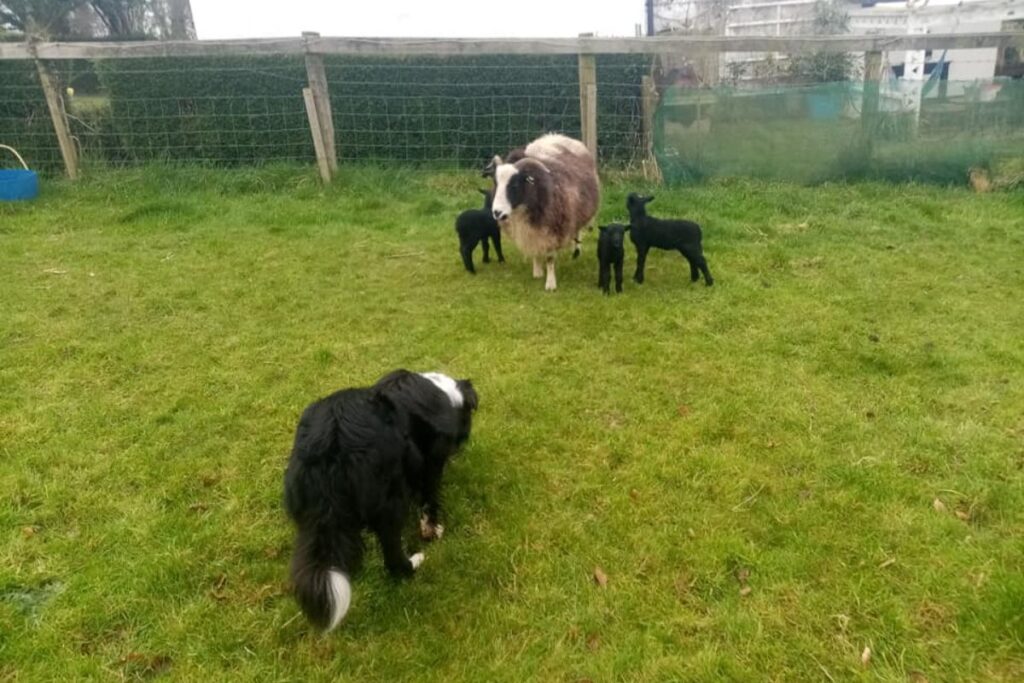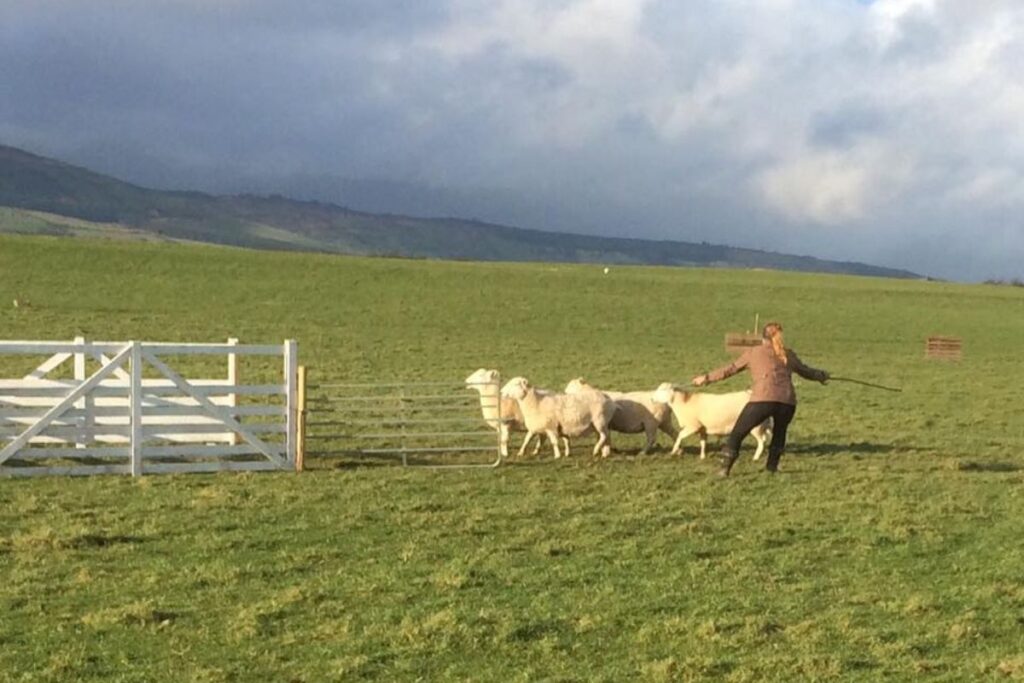That’s Farming editor, Catherina Cunnane, in conversation with Krisztina Rozanich in this week’s women in ag segment. We discuss her non-farming background, stints in Budapest and Texas, moving to Ireland and a striking passion for sheepdog training.
“I am a 52-year-old Hungarian artist and part-time farmer. I keep a small flock of sheep, mainly hardy breeds like Blackface, Shetlands and Easycare and take on large lambings every year.
Growing up in a big city, I had no experience or tradition of farming in my background.
However, I have always had a love of animals and the natural beauty of the world, so my farming knowledge has come about through experience. My love of sheep came about through my love of training sheepdogs.
I usually have 6-8 sheepdogs at different ages and different stages of breaking. Most of my dogs go back to my first good sheepdog bitch, Skoj, who was a fantastic bitch that I won the Irish nursery final with after six months of competing.
I do not breed many, but I do believe that you should start with a good bitch. I currently have a stud dog, Pete, off Skoj and James Mc Gee’s Silver.
He has proven that he has many of the best features from each of his parents, which I believe is successful breeding. There are a few traits that I do not like to see in a dog, and I try to avoid dogs with these traits.
However, breeding is a gamble, and you never know where a good dog comes from.
I believe we should diversify the gene pool when it comes to breeding.
Furthermore, I think a few very important characteristics I look for in a dog are brain, naturalness, and a desire on the dog’s part to work with me.
You cannot put brains into a dog, and it can be terribly hard to work with a dog that is just in it for himself. It is, after all, a partnership.

Budapest, Texas, and Ireland
I started training sheepdogs twenty plus years ago. It began when I lived in Texas with two not so talented dogs. I was fascinated by the working collie, even though I had no background in collies.
I moved to Ireland in 2001, but it was not until I was living in Budapest a few years later, where I helped set up the Hungarian chapter of the I.S.D.S. that I began to train dogs and help others learn.
When I moved back to Ireland in 2009, I began to train pups to sell on, and I soon started taking dogs in to train for others. I usually break about eight dogs a year.
Every dog is different. I believe to be a good trainer, you have to be a bit of a psychologist. You have to get into that particular dog’s mind; you have to be flexible in your thinking and approach.
And you must exercise patience. I also believe the way they are reared is vital. A dog, like a child, needs both love and discipline boundaries.
They are more comfortable with you being the head of the pack, yet I do believe they need time to be a pup.

Sheepdog training
Also, I feel that a dog should be allowed to be a dog, which means having a bit of time for play, socialisation, etc.
Every dog is different; therefore, every one of them trains up at a different rate. For example, I have had a dog in for training, and after six weeks, she went on to qualify for the nursery final. I have sold dogs to Norway, Finland, America, Germany, and the USA.
I really taught myself how to train sheepdogs through a lot of mistakes, and I have and still do make plenty.
We are always learning. I would listen to others, ask questions, and I would see what made sense to me.
Honestly, I would get terribly confused with things like ‘a half flank’ when I first started. I think we learn better when things are simplified, and we are not given too much information at one time.
It is a progression; I find it very rewarding to train dogs for work. I love getting calls from people telling me how happy they are with their dog in everyday work.
While trialling is nice, I believe we should be breeding and training for work and trialling, secondly. I use my dogs at lambing, and I often go up to help my good friend, Maura Ryan, who farms in Mt. Leinster.
Every dog has its faults and its strengths, and we must recognise that fault and strength to get the best out of the dog.

Rewarding
The most rewarding thing for me is when I get a job done with my dog. I enjoy their companionship, intelligence, the sense of partnership, and I never fail to be awed by a good dog’s natural ability.
If I were to advise someone on starting to train or trial a sheepdog, it would be, firstly, to understand what a collie’s natural instinct is.
Also, realise what kind of handler you are, as it would not be a very successful partnership if you are not the kind of person who likes a hard dog, and you have a hard dog on your hands.
I start every dog with the same approach, whether it is to be a farm dog or a trial dog. The ability to read stock is vital for someone interested in a working collie. This was one of the hurdles I had to overcome as I did not grow up with sheep/farming and knew virtually nothing about them.
You cannot know where to place your dog if you can’t read the stock. So, if, like me, you did not come from farming, get involved with moving stock without the dog, and you will realize where the dog needs to be to move them properly.
I would also ask a lot of questions from people involved in sheep and collies. Try to seek out people that can clearly and simply explain different types of dogs.
But I think the most important thing for anyone interested is simply experience.
The more dogs you train, the more your knowledge grows. The more varied the situations you put yourself and your dog in, the more experience you gain.

Reflection
I would have one regret in my journey with sheepdogs – if I had my first bitch to train now, knowing what I know now.
However, we cannot turn back the clock. I do often look back and laugh at some of the mistakes I made. For example, quite often, I would be giving her a flank to put them in the pen, and the poor girl would not take them.
When she finally did, the sheep would dart past the pen! She knew better than me. She had an amazing natural ability.
I learned and am still learning, that when you have a good dog, you have to trust them. I am the kind of handler who likes to let my dogs work. Therefore, I try not to micromanage. This is, of course, dependent on whether you have a natural dog.
In saying that, a dog must still listen to you, and that is where the part about a dog’s willingness to work with you comes in. Your dog must trust you as well.”

To share your story, email – [email protected]
See more women in ag profiles.





